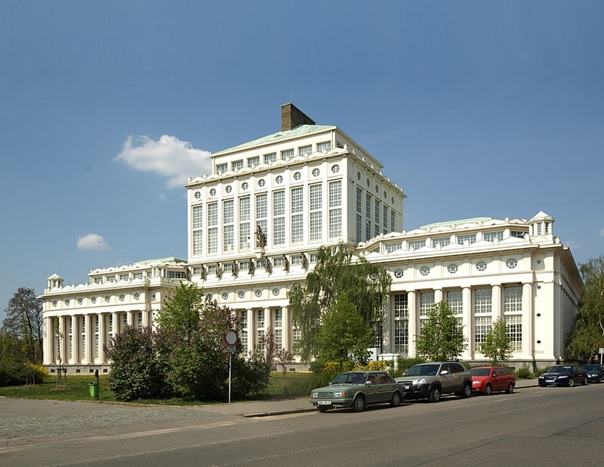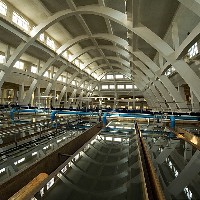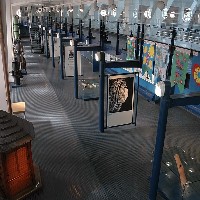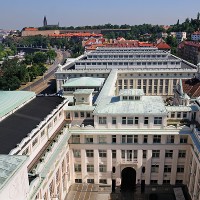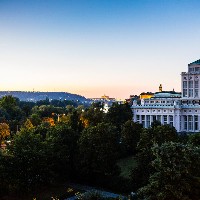Breadcrumbs navigation
Prague Waterworks Museum (Muzeum pražského vodárenství)
The museum is located at the Podolí Waterworks Museum – a listed unique example of industrial architecture. From the observation deck of the tower at a height of 40 m you get an unusual view of the river and city. The permanent exhibition charts the historical development of Prague's first private water supply from the first private water mains from the 12th century through the Renaissance period Vltava waterworks and late 19th century water supply construction, all the way through to the present.
- Monuments & Architecture
- technical monument
- Arts & Entertainment
- museum
- with children
- tour
Entrance fee
- basic 150 CZK
Contacts
- Prague Waterworks Museum (Muzeum pražského vodárenství)
- Podolská 17
- 140 00 Praha 4 – Podolí
- +420272172344
- +420221402307
Object history
Podolí Water Station
The rapid development of industry in the second half of the 19th century increased demands on water consumption. A great number of local water stations were built. From 1882 Vinohradská water station was operated in Podolí, which was connected with the water tower in Korunní Avenue through piping and supplied water to Královské Vinohrady, and later also Žižkov, Nusle Vršovice and Strašnice. In 1885 the Prague steam water station was built in Podolí, which pushed the water even to upper floors of houses. It also supplied the naturally filtered Vltava water to Smíchov and Malá Strana and later to Karlín. From 1888, when the reconstruction of the old water stations was carried out, street fountains were gradually replaced. In 1908, construction of the integrated Prague water supply system was started in Jizera area near Káraný, where the water from Jizera was filtered naturally through gravel layers in the hundreds of wells. The water supply system was completed in 1913, had an output of 70,000 cubic meters a day, so that the operation of old water plants could be terminated. At that time also the operation of the old water station in Podolí was terminated. When the capacity of water resources in Káraný ceased to be enough, the municipality decided to build a new high-capacity filtration water station in Podolí processing the Vltava water.
The new water station was built between 1925 and 1929 according to the grandiose project by dr. ing. Architect Antonín Engel, a professor at the Technical University Prague. The water plant was built by Kress Praha. In addition to filtration facility a collecting work was built on today’s Rowing Island on the Vltava River, engine plant building, which was used to pump water from the river, and the building for the staff at the filtration plant. At that time these were gigantic construction projects. The maximum performance of the new water plant was 35 – 40,000 cubic meters per 24 hours. The water had to pass through three large-grained stages, water overflows, where it was air-saturated several times and finally it was filtrated through the finest filters, where it was also cleaned from germs. The water was supplied into the new tanks in Flora and from there to a large part of the city. As the city had required more water, the capacity of the filtration station in Podolí gradually increased requiring ever more modern technology. The water station has been reconstructed several times; in 1932 chemical treatment, so-called clarification of water, during which impurities are precipitated and separated from the water deposits, was put before the filtration. In the 1940s the facility was gradually converted to the rapid filtration. From 1956 to 1965 second building of similar architecture was built for the second filtration station according to the original design by Antonín Engel and Maximilian Koschin and at the same time older part was reconstructed. 15 companies and plants participated in construction works. A huge 45 m high tower was built over the central part of the spectacular neo-classicist building. The facade of the building over the portal is fitted with Hořice sandstone statues that represent the Vltava River and its right and left tributaries. The authors of the sculptures on view from left to right are: Vydra - Josef Fojtík, Otava - Joza Novák, Blanice in Šumava and Malše - Vodička, Berounka - Josef Fojtík, Vltava in the middle - Joza Novák (the statue is 3.6 m high), Sázava - Matějů, Blanice in Vlašim and Želivka - Josef Fojtík, Lužnice – common work of Joza Novák, Vodička and Josef Fojtík, was placed on the front as the last in 1963, and last Nežárka - Vodička. The first names of the two sculptors are not known.
The system of water supply to Prague today includes namely Želivka water project, the largest water treatment plant in the country. The drinking water from Podolí is mixed with water from main sources of water - Želivka and Káraný Plants. Podolí Water Station with a very good quality of drinking water now supplies water to parts of the city that cannot be supplied from other treatment plants, namely Old Town and Josefov and much water from Podolí goes to the water reservoirs at Flora. The output of Podolí Water Station will be significant in restoring water and sewerage networks in the historic city centre. The optimum output of the water station is 500 litres per second, but it can be increased up to the capacity performance of 2,200 litres per second. The water station is also an important backup source of water for Prague in the event of an accident of main sources.
In 1992, the Municipal Authority of the Capital City of Prague started the general reconstruction of Podolí Water Station according to the project of engineers architects Arnošt Navrátil, Petr Páv and Václav Frýdecký. In addition to the repair of buildings also the technological facilities were modernized under continuous operation and at the open area of older building an object was built, which serves as an exhibition place of the Museum of Prague Waterworks. The Podolí Water Station is a listed building as a technically important historical monument.
Information source: www.pvk.cz
